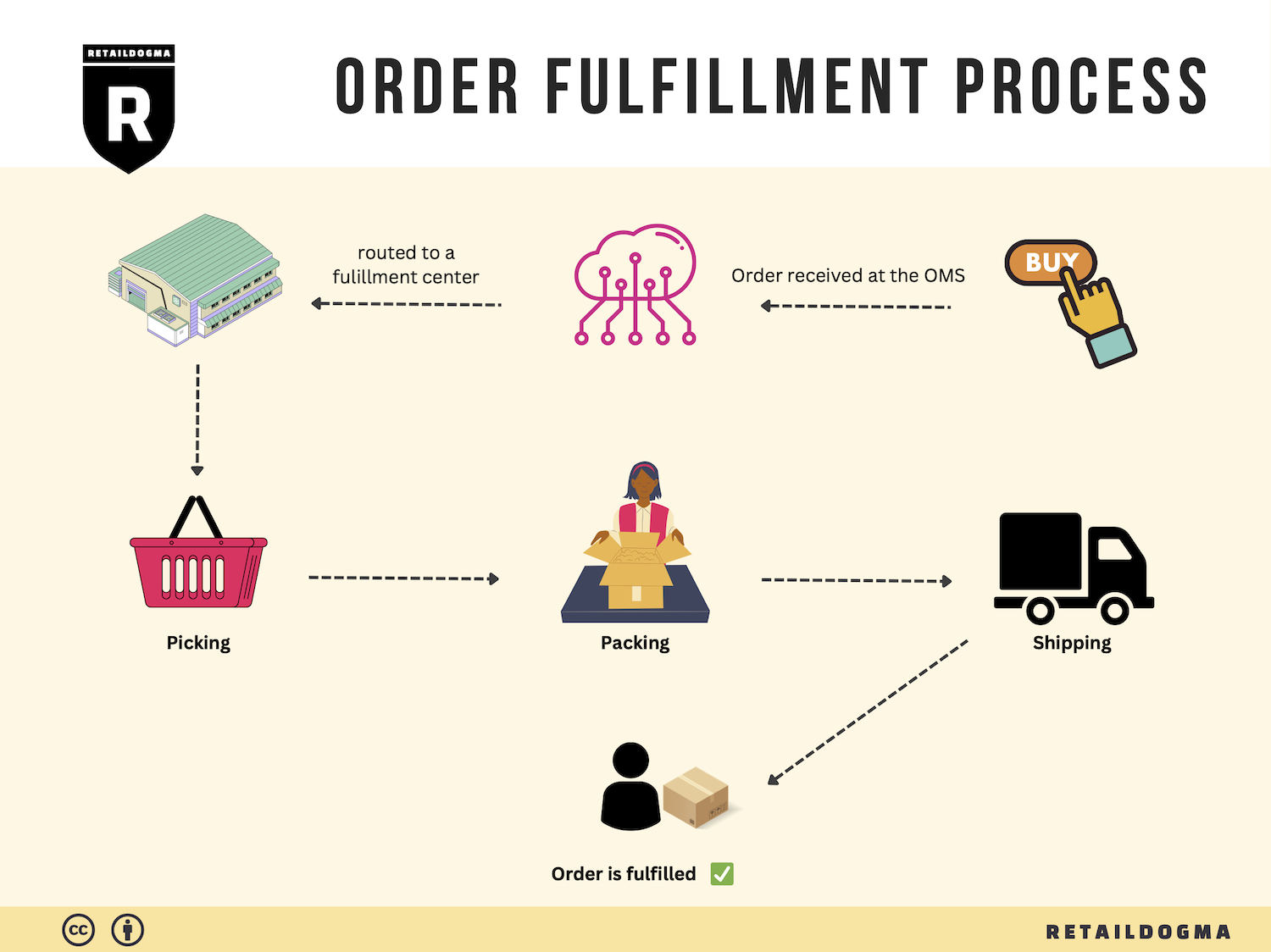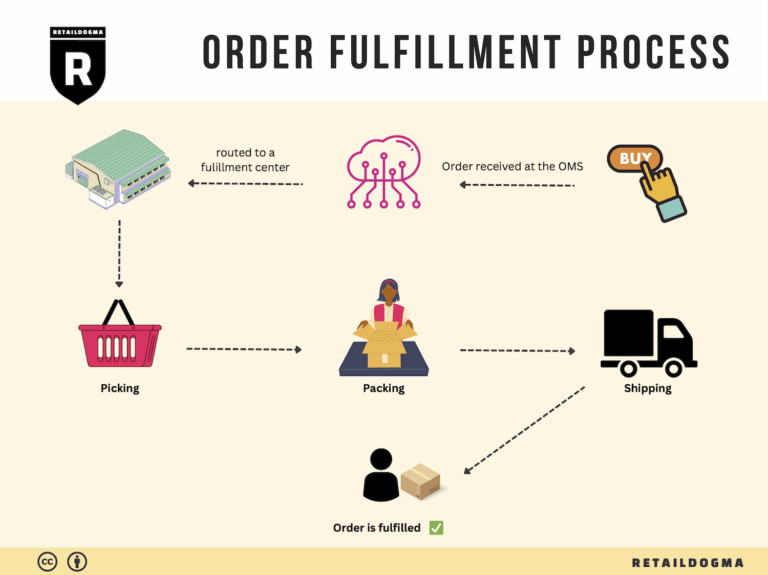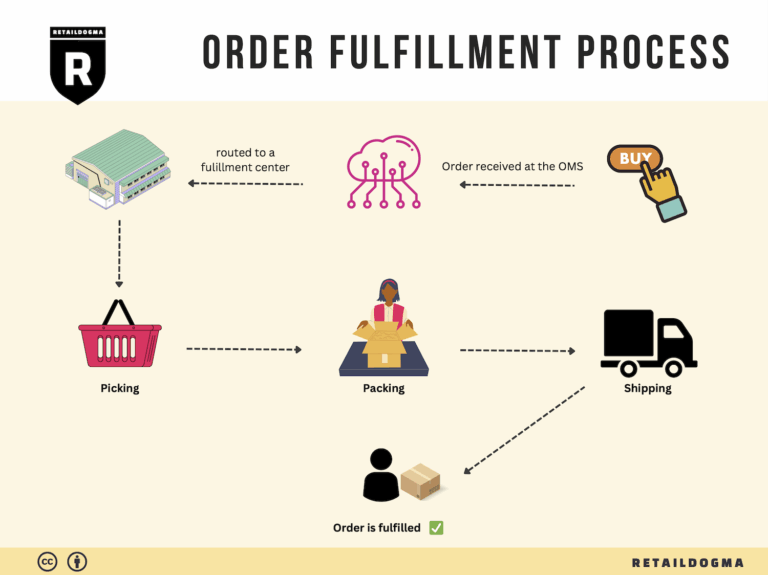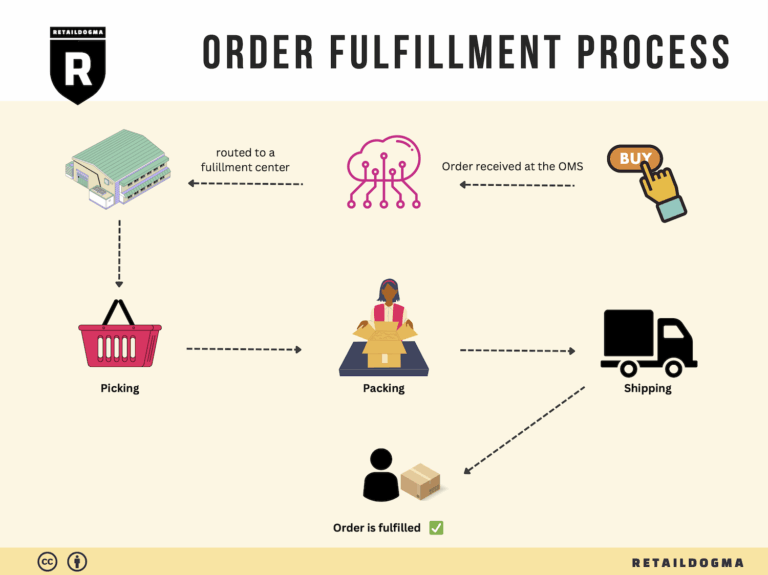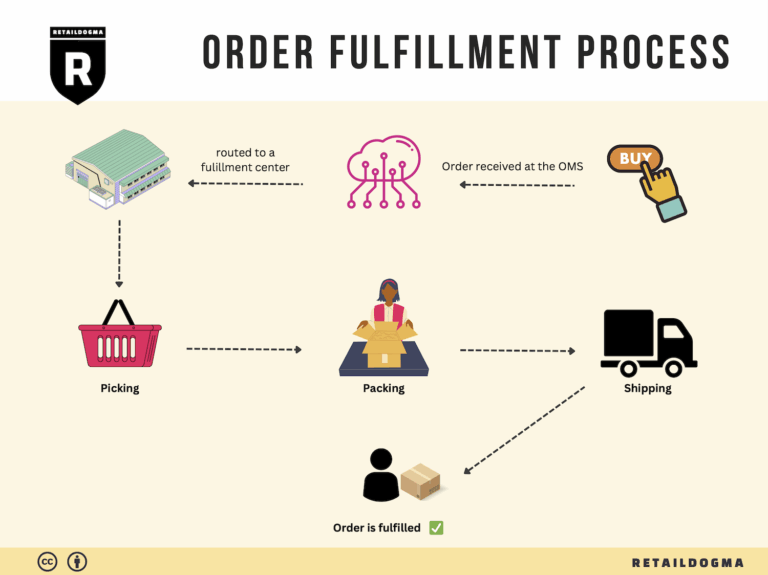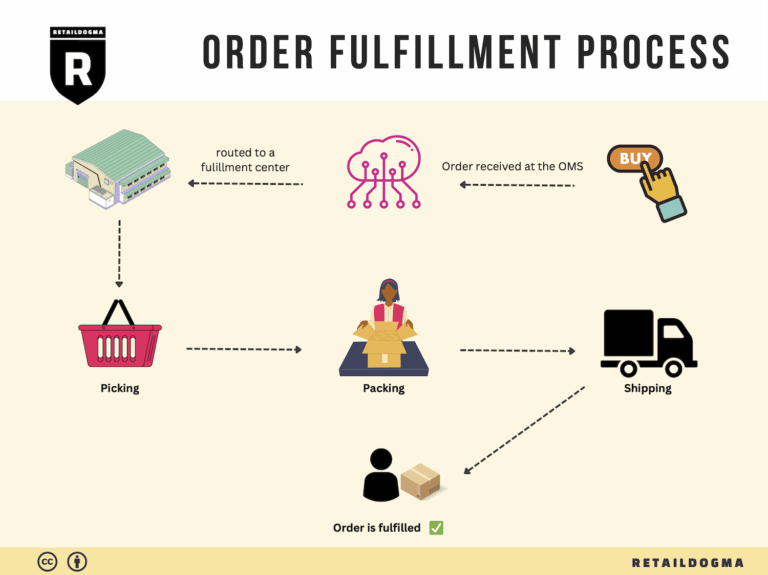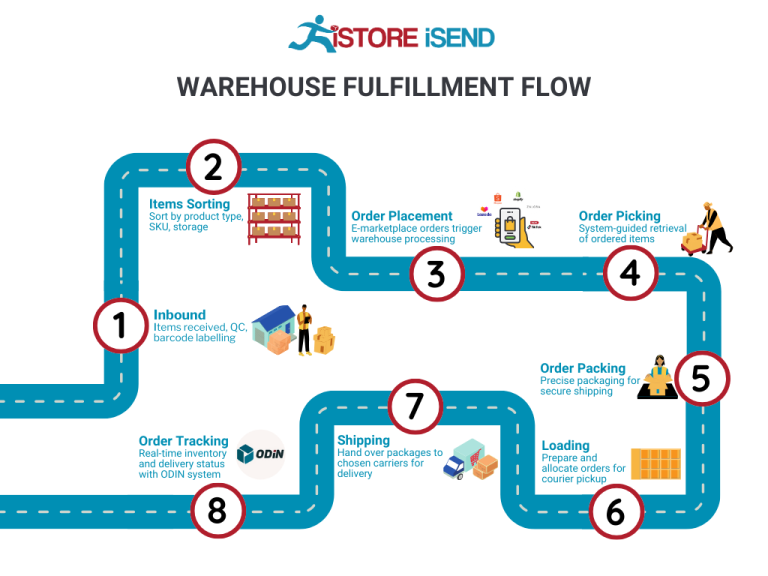What Is A Fulfillment Center? A Complete Guide (2025)
What is E-commerce Fulfillment? An Introduction for Growing Businesses
Understanding E-commerce Fulfillment: A Vital Component for Growth
As your online business begins to thrive, the excitement of increasing sales can quickly become overshadowed by the logistical challenges of packing and shipping orders. Many growing businesses find themselves overwhelmed by the sheer volume of orders, struggling to manage their logistics efficiently. This is where e-commerce fulfillment comes into play.
E-commerce fulfillment is the comprehensive process of getting a product from your inventory into the hands of your customers. It encompasses everything from warehousing and inventory management to picking, packing, shipping, and even handling returns. As your business scales, understanding and optimizing this process is crucial for maintaining customer satisfaction and operational efficiency.
In this guide, we will explore the various fulfillment models available to e-commerce businesses, including Third-Party Logistics (3PL) and Fulfillment by Amazon (FBA). Each model has its own set of advantages and can be tailored to meet the unique needs of your business. For instance, 3PL providers can offer flexibility and scalability, while FBA provides access to Amazon’s vast customer base and logistics network.
We will also cover the core services involved in e-commerce fulfillment. These services typically include inventory storage, order processing, packaging, shipping, and returns management. Understanding these services will help you identify which aspects of fulfillment you may want to handle in-house versus outsourcing to a partner.
Choosing the right fulfillment partner is another critical decision for growing businesses. Factors to consider include the partner’s reliability, technology capabilities, geographic reach, and customer service. We’ll provide practical tips on how to evaluate potential partners, ensuring that you select one that aligns with your business goals and customer expectations.
Finally, pricing structures for fulfillment services can vary widely based on the model and services you choose. We will break down common pricing strategies, including per-order fees, storage costs, and shipping rates, so you can make informed financial decisions.

Our goal with this guide is to empower you to make smart, strategic decisions about your e-commerce logistics. By understanding fulfillment and its impact on your business, you can streamline operations, improve customer satisfaction, and ultimately drive growth. Whether you are just starting out or looking to scale, mastering e-commerce fulfillment is a key step towards success.
What You’ll Learn In This Guide
- What is E-commerce Fulfillment? An Introduction for Growing Businesses
- The Order Fulfillment Process: From ‘Buy’ Button to Customer’s Door
- Comparing Fulfillment Models: In-House vs. 3PL vs. Dropshipping
- A Deep Dive into Amazon FBA: Pros, Cons, and Who It’s For
- Core Services Offered by Fulfillment Centers
- How to Choose a Fulfillment Partner: A 6-Point Checklist
- Understanding Fulfillment Pricing: A Breakdown of Common Fees
- Frequently Asked Questions (FAQs) about Fulfillment
- Conclusion: Is Outsourcing Fulfillment the Right Move for Your Business?
- Important Disclaimer
The Order Fulfillment Process: From ‘Buy’ Button to Customer’s Door
1. Receiving Inventory
The first step in the order fulfillment process is receiving inventory. When products arrive at the fulfillment center, they undergo an inspection to ensure quality and accuracy. This is crucial for maintaining customer satisfaction and minimizing returns. Each item is logged into the inventory management system using a Stock Keeping Unit (SKU), a unique identifier that allows easy tracking and management of products.
Effective inventory receiving processes help prevent stock discrepancies and ensure that the right products are available for order fulfillment. This step sets the foundation for the entire operation; without accurate receiving, the subsequent steps can become chaotic, leading to delays and errors.
2. Warehouse Storage
Once inventory is received and verified, it is stored in designated areas within the warehouse. Amazon’s MIA1 Fulfillment Center utilizes a sophisticated storage system that includes multi-compartment storage pods. Each item is stored in a random location within these pods, which allows for maximum space efficiency and quicker retrieval times.
Proper warehouse storage is essential because it directly impacts the speed and efficiency of order picking. An organized storage system reduces the time it takes to locate items, thereby improving overall operational efficiency. Moreover, using technology to manage storage locations enhances accuracy and minimizes the risk of misplaced inventory.
3. Order Picking
When a customer places an order, the next step is order picking. This involves retrieving the ordered items from their storage locations. At MIA1, robots play a significant role in this process. They navigate the warehouse using barcodes and magnetic sensors, fetching entire pods that contain the ordered items. Human workers, known as pickers, then select the specific items needed from these pods.
Order picking is critical because it directly affects order accuracy and fulfillment speed. Utilizing technology such as pick lists—documents that specify the items to be retrieved—streamlines this process, ensuring that pickers can efficiently gather the correct products. A well-executed picking process enhances customer satisfaction by ensuring that orders are fulfilled accurately and promptly.
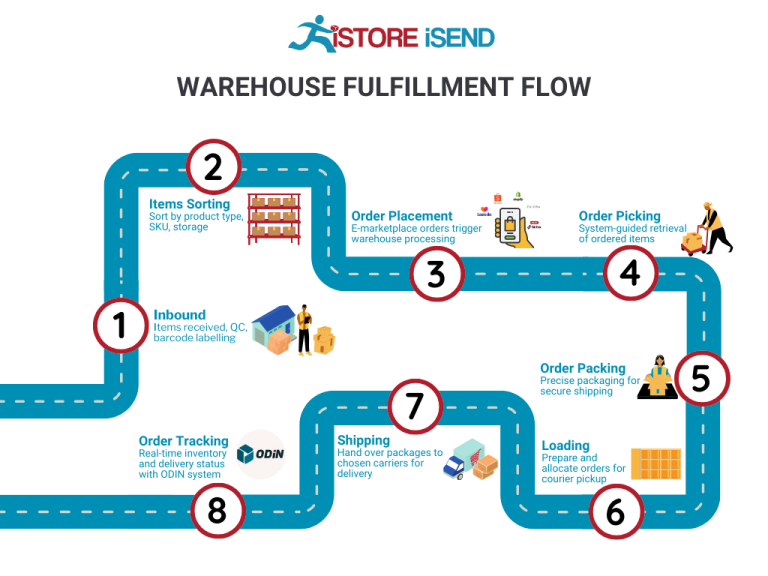
4. Order Packing
After items are picked, they move to the packing stage. Here, the products are placed into packaging that protects them during transit. At MIA1, this process includes an automated SLAM (scan, label, apply, and manifest) system, which ensures that each package is correctly labeled and documented before it is sent out for delivery.
Packing is vital because it safeguards the products and ensures they arrive at the customer’s door in perfect condition. Proper packaging also reduces the likelihood of returns due to damage. Additionally, effective packing processes help optimize shipping costs by minimizing the size and weight of packages, leading to better freight rates and improved profit margins.
5. Shipping & Delivery
The final step in the order fulfillment process is shipping and delivery. Once packed, orders are sorted based on their geographic destination and loaded onto delivery vehicles. Amazon’s MIA1 Fulfillment Center utilizes advanced logistics software to manage this process efficiently, ensuring that packages are dispatched quickly and accurately.
Shipping and delivery are crucial for maintaining customer satisfaction. Fast, reliable delivery services are a significant factor in e-commerce success. By leveraging partnerships with various carriers and utilizing smart routing algorithms, businesses can ensure timely delivery, which enhances customer loyalty and encourages repeat purchases.
In conclusion, understanding and optimizing each step of the order fulfillment process—from receiving inventory to shipping and delivery—can significantly impact an e-commerce business’s efficiency and customer satisfaction. By implementing robust systems and leveraging technology, businesses can scale effectively and meet the demands of their customers.
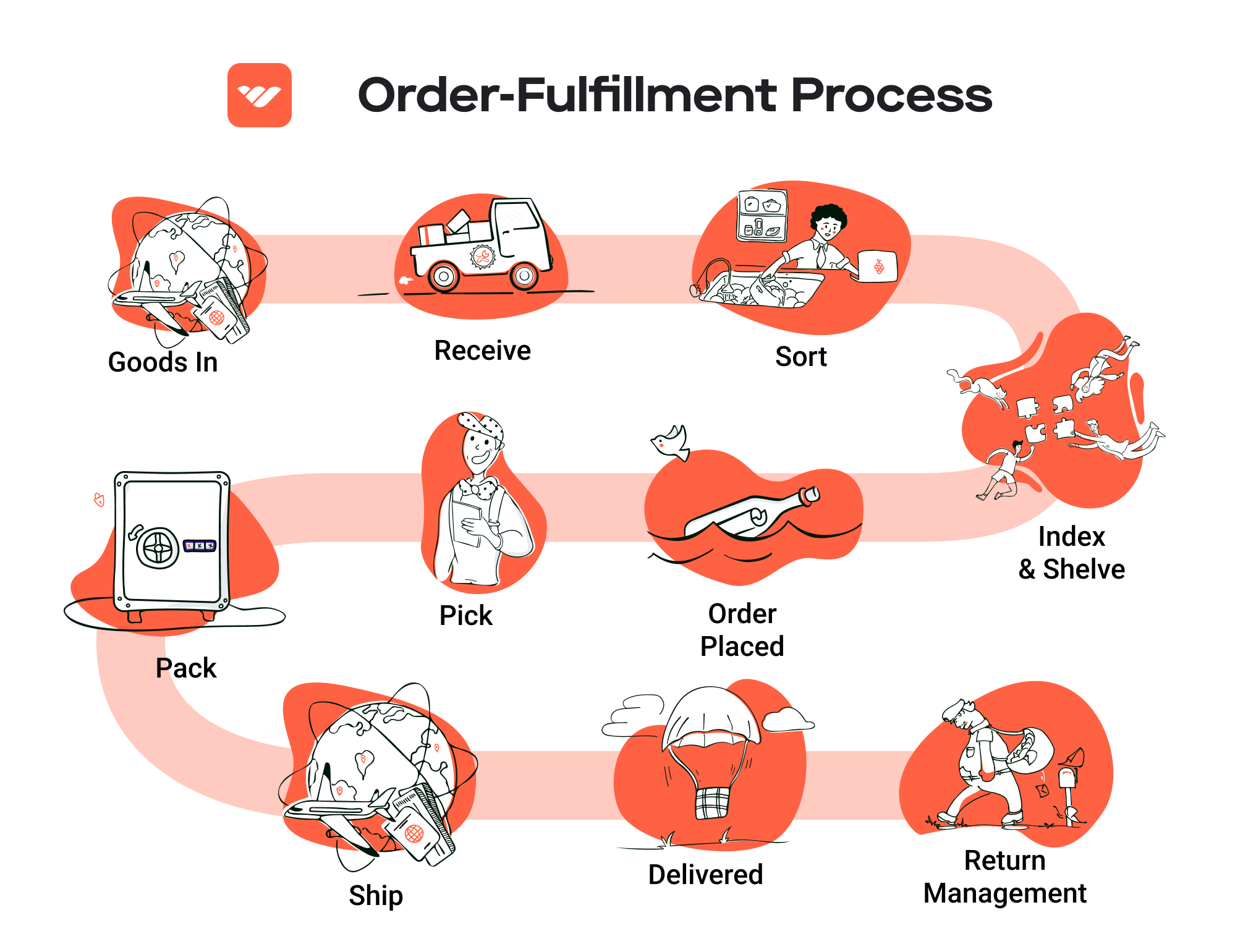
Comparing Fulfillment Models: In-House vs. 3PL vs. Dropshipping
Fulfillment Model Comparison
| Model | Who Handles Inventory | Best For (Business Stage) | Key Advantage | Key Disadvantage |
|---|---|---|---|---|
| In-House Fulfillment | Your own team | Established businesses | Complete control over processes | High overhead and operational complexity |
| Third-Party Logistics (3PL) | A third-party provider | Startups to mid-size businesses | Scalability and flexibility | Less control over inventory and processes |
| Dropshipping | Supplier or manufacturer | New businesses or niche markets | Low startup costs and no inventory risk | Lower profit margins and longer shipping times |
In-House Fulfillment
In-house fulfillment involves managing your own warehousing and logistics operations. This model is best suited for established businesses that have the resources and demand to justify a dedicated warehouse and fulfillment team. The key advantage of in-house fulfillment is the complete control it provides over the entire process—from inventory management to order fulfillment and customer service. This control allows for tailored solutions that can enhance customer satisfaction, as businesses can directly manage shipping times, packaging, and returns. However, the disadvantages include high overhead costs, such as staffing, warehousing, and technology investments, as well as the operational complexity that comes with managing logistics and inventory. Companies must also be prepared to handle fluctuations in demand, which can lead to either stockouts or excess inventory.
Third-Party Logistics (3PL)
Third-party logistics (3PL) providers take over the warehousing and fulfillment processes for businesses, allowing them to focus on their core competencies. This model is ideal for startups and mid-size businesses looking to scale without the burden of managing logistics internally. A significant advantage of using a 3PL is scalability; businesses can easily adjust their logistics needs based on fluctuating order volumes without the need for significant capital investment. Additionally, 3PL providers often have established networks and expertise, which can lead to improved shipping rates and efficiency. However, the trade-off is a reduced level of control over inventory and fulfillment processes, which can sometimes lead to miscommunication or delays. Businesses must carefully select their 3PL partner to ensure alignment with their service standards and customer expectations.
Dropshipping
Dropshipping is a fulfillment model where the retailer does not keep products in stock but instead transfers customer orders directly to a supplier or manufacturer, who then ships the products directly to the customer. This model is particularly attractive for new businesses or those targeting niche markets, as it requires minimal startup costs and eliminates the risks associated with unsold inventory. The primary advantage of dropshipping is the low financial barrier to entry; entrepreneurs can launch their e-commerce stores without the need to invest in inventory upfront. However, dropshipping also has its drawbacks. Profit margins are often lower than other fulfillment models because the retailer pays the supplier a wholesale price. Additionally, shipping times can be longer, as products may be coming from various suppliers, and businesses have less control over the quality of products and customer service. This can lead to challenges in maintaining a consistent brand experience.
In conclusion, each fulfillment model presents its own unique set of advantages and challenges. The choice between in-house fulfillment, 3PL, and dropshipping will largely depend on a business’s stage of growth, resources, and strategic priorities. It’s essential for e-commerce business owners and operations managers to evaluate their specific needs and market conditions to select the fulfillment model that best aligns with their operational capabilities and customer expectations.
A Deep Dive into Amazon FBA: Pros, Cons, and Who It’s For
Understanding Fulfillment by Amazon (FBA)
Fulfillment by Amazon (FBA) is a service offered by Amazon that allows sellers to store their products in Amazon’s fulfillment centers. When a customer orders a product, Amazon takes care of the storage, packaging, and shipping, as well as customer service and returns. This model enables sellers to leverage Amazon’s extensive logistics network and customer trust, making it a compelling option for many e-commerce businesses.
How FBA Works
-
Product Listing: Sellers create product listings on Amazon and choose FBA as their fulfillment method.
-
Inventory Shipment: Sellers ship their products to Amazon’s fulfillment centers, such as the MIA1 center in Opa Locka, FL. This facility exemplifies Amazon’s commitment to efficient logistics, boasting advanced robotics and automated systems to manage inventory.
-
Storage: Once received, products are stored in Amazon’s warehouses. The inventory is organized using sophisticated technology, including barcodes and automated retrieval systems.
-
Order Processing: When a customer places an order, Amazon’s system automatically picks the item from the inventory, packages it, and ships it directly to the customer.
-
Customer Service: Amazon handles customer inquiries and returns, allowing sellers to focus on other aspects of their business.
-
Payment: After the sale, Amazon deducts its fees from the sale price and transfers the remaining funds to the seller’s account.
Pros of Using FBA
-
Prime Eligibility: Products fulfilled by Amazon are eligible for Amazon Prime, which can significantly increase sales volume due to the attractive two-day shipping option for Prime members.
-
Customer Trust: Amazon is a well-known and trusted brand, which can enhance customer confidence in purchasing products. This trust can lead to higher conversion rates compared to less recognized brands.
-
Multi-Channel Fulfillment: FBA allows sellers to fulfill orders from other sales channels (like eBay or their own websites) using Amazon’s logistics, providing a streamlined operation for businesses that sell across multiple platforms.
-
Scalability: FBA enables sellers to scale their operations without the need to invest heavily in warehousing and logistics. As demand grows, sellers can simply send more inventory to Amazon.
-
Simplified Logistics: By outsourcing fulfillment to Amazon, sellers can save time and resources that would otherwise be spent on managing inventory, shipping, and customer service.
Cons of Using FBA
-
High Fees: FBA incurs various fees, including storage fees and fulfillment fees, which can eat into profit margins, especially for low-cost items. Sellers must carefully analyze these costs to ensure profitability.
-
Strict Inventory Rules: Amazon has stringent inventory management policies, including requirements for labeling, packaging, and maintaining stock levels. Failure to comply can result in additional fees or penalties.
-
Commingling Risks: FBA may commingle inventory from multiple sellers, meaning that products from different sellers can be stored together. This can lead to potential issues with brand integrity and quality control if defective items are sent to customers.
-
Limited Control: Sellers have less control over the fulfillment process, including packaging and shipping times. Any delays or issues at Amazon’s facilities can directly impact the seller’s reputation.
-
Dependence on Amazon: Relying on FBA means sellers are tied to Amazon’s policies and ecosystem. Changes in Amazon’s terms of service or fee structures can significantly affect a seller’s business.
Who is FBA Best For?
Fulfillment by Amazon is best suited for:
-
Small to Medium-Sized Businesses: Those looking to scale without investing heavily in infrastructure can greatly benefit from Amazon’s logistics capabilities.
-
Sellers with High Volume: Businesses that have a steady or high volume of sales can more easily absorb FBA fees, making the service more cost-effective.
-
Brands Seeking Prime Access: Companies that want to tap into the Prime customer base should consider FBA as it gives them the ability to offer Prime shipping options.
-
Multi-Channel Sellers: E-commerce businesses that sell on multiple platforms can streamline their fulfillment process by using FBA for all their orders.
-
Businesses Focused on Growth: Sellers looking to expand their reach and improve their operational efficiency will find FBA a valuable partner in managing logistics.
In conclusion, while FBA offers numerous advantages such as Prime eligibility and customer trust, it is essential for sellers to weigh these benefits against the associated costs and risks. Understanding your business model and customer base is crucial in determining whether FBA aligns with your growth strategy.
Core Services Offered by Fulfillment Centers
Inventory Management & Warehousing
Inventory management and warehousing are foundational services provided by fulfillment centers, designed to optimize storage space and streamline the flow of goods. At facilities like the Amazon MIA1 Fulfillment Center, sophisticated inventory systems are utilized to track products in real-time, ensuring that stock levels are accurately maintained and easily accessible.
What It Is: Inventory management encompasses the processes involved in ordering, storing, and tracking inventory. Fulfillment centers employ advanced technologies, such as barcode scanning and RFID systems, to monitor stock levels. Warehousing refers to the physical storage of goods before they are shipped to customers.
Benefits: For e-commerce businesses, effective inventory management minimizes the risk of stockouts and overstock situations, which can lead to lost sales or increased holding costs. By utilizing a fulfillment center, businesses can leverage the center’s expertise and technology to ensure optimal inventory turnover, reducing waste and improving cash flow. Additionally, centralized warehousing allows for greater scalability, enabling businesses to expand their product offerings without the need for significant capital investment in physical space.
Pick and Pack Services
Pick and pack services are essential for preparing orders for shipment, ensuring that products are accurately selected and packaged for delivery.
What It Is: This service involves the process of picking items from the warehouse based on customer orders, followed by packing those items securely for shipping. Fulfillment centers use automated systems and trained personnel to efficiently pick and pack products, often employing methods like batch picking to optimize time and labor.
Benefits: For e-commerce businesses, reliable pick and pack services directly impact customer satisfaction. Quick and accurate order fulfillment leads to faster shipping times, enhancing the overall customer experience. Furthermore, outsourcing these services to a fulfillment center allows businesses to focus on core activities such as marketing and product development, rather than the logistical complexities of order fulfillment. This not only increases operational efficiency but also enables businesses to scale rapidly as demand fluctuates.
Kitting and Assembly
Kitting and assembly services enable businesses to offer customized product packages or complex products that require assembly before shipping.
What It Is: Kitting involves combining multiple items into a single package or kit, while assembly refers to putting together components of a product before it is shipped to the customer. Fulfillment centers often have the capabilities to handle both processes, utilizing skilled labor and specialized equipment to ensure quality and efficiency.
Benefits: For e-commerce companies, kitting and assembly services provide significant advantages. They allow businesses to offer bundled products or promotional packages that can enhance the perceived value for customers. Additionally, by utilizing a fulfillment center for assembly tasks, businesses can reduce the time and labor costs associated with in-house assembly, leading to faster order turnaround times. This can be particularly beneficial during peak seasons or promotional events when demand spikes.
Returns Management (Reverse Logistics)
Returns management, often referred to as reverse logistics, is a critical service offered by fulfillment centers to handle product returns efficiently.
What It Is: This service involves the processes of receiving returned items, inspecting them, restocking them if applicable, and managing any necessary repairs or refurbishments. Fulfillment centers have established protocols for processing returns to minimize loss and maximize recovery.
Benefits: For e-commerce businesses, effective returns management is essential for maintaining customer loyalty and satisfaction. A streamlined returns process can help reduce the friction associated with returns, encouraging customers to make purchases without fear of hassle if they need to return an item. Furthermore, by utilizing a fulfillment center’s reverse logistics capabilities, businesses can enhance their operational efficiency and reduce costs associated with returns processing. This not only improves the bottom line but also provides valuable insights into customer preferences and product performance, informing future business strategies.
In summary, leveraging the core services offered by fulfillment centers such as inventory management and warehousing, pick and pack services, kitting and assembly, and returns management can significantly enhance an e-commerce business’s operational efficiency and customer satisfaction. By outsourcing these functions to specialized providers, businesses can focus on growth and scaling, confident that their logistics operations are in expert hands.
How to Choose a Fulfillment Partner: A 6-Point Checklist
Location & Warehouse Network
Choosing a fulfillment partner begins with evaluating their location and warehouse network. The proximity of a fulfillment center to your customer base can significantly impact shipping times and costs.
Why It’s Important:
– Faster shipping leads to increased customer satisfaction and can reduce shipping expenses.
– A well-distributed network allows for efficient handling of orders, particularly for e-commerce businesses with a wide geographic reach.
Questions to Ask:
– Where are your warehouses located, and how do they align with my target markets?
– Can you provide insights into your shipping rates and delivery times for various regions?
– Do you have plans to expand your network in the future?
Technology & Integrations
A modern fulfillment partner should utilize advanced technology to streamline operations. This includes inventory management systems, order tracking, and integration capabilities with your existing e-commerce platform.
Why It’s Important:
– Technology enables real-time visibility into inventory levels, order processing, and shipping statuses.
– Seamless integration with your e-commerce platform can automate workflows, reducing manual errors and improving efficiency.
Questions to Ask:
– What technology platforms do you use for inventory management and order processing?
– How do you integrate with popular e-commerce platforms (e.g., Shopify, WooCommerce, Amazon)?
– Can you provide real-time tracking capabilities for both inventory and shipments?
Specializations (e.g., Cold Storage, Oversized Items)
Different fulfillment partners may specialize in certain types of products or storage conditions, such as temperature-controlled items or oversized goods.
Why It’s Important:
– If your products have specific storage or handling requirements, partnering with a specialist ensures compliance with regulations and optimal care.
– Specialized services can enhance your product offerings and cater to niche markets.
Questions to Ask:
– What types of products do you specialize in handling?
– Do you offer any specialized storage solutions (e.g., cold storage, hazardous materials)?
– How do you ensure compliance with industry regulations related to specialized products?
Scalability & Capacity
As your business grows, your fulfillment partner should be able to scale operations accordingly. It’s vital to assess their capacity and flexibility to handle increased order volumes.
Why It’s Important:
– A partner that can scale with you prevents disruptions in service and supports your growth ambitions.
– Understanding their capacity limits helps avoid potential bottlenecks during peak seasons or rapid growth periods.
Questions to Ask:
– What is your current capacity for handling orders, and how do you manage fluctuations in volume?
– Can you describe your process for scaling operations during peak seasons?
– Are there any additional fees associated with scaling my operations?
Pricing and Contracts
Understanding the pricing structure and contract terms is crucial for budgeting and financial planning. Look for transparency in pricing to avoid unexpected costs.
Why It’s Important:
– A clear pricing structure helps you accurately forecast expenses and maintain healthy profit margins.
– Contract terms should be flexible enough to accommodate changes in your business without incurring penalties.
Questions to Ask:
– Can you provide a detailed breakdown of your pricing model (e.g., storage fees, pick and pack fees, shipping costs)?
– Are there any hidden fees I should be aware of?
– What are the terms of the contract, and how can they be adjusted if my business needs change?
Customer Support & Reviews
Effective customer support is vital for resolving issues quickly and maintaining a positive partnership. Additionally, checking reviews and testimonials can provide insights into the partner’s reliability.
Why It’s Important:
– Responsive customer support can mitigate disruptions and enhance overall service quality.
– Reviews can reveal patterns in service quality, reliability, and customer satisfaction.
Questions to Ask:
– What level of customer support do you offer (e.g., dedicated account manager, 24/7 support)?
– How do you handle issues related to lost or damaged shipments?
– Can you provide references or case studies from other clients in my industry?
Conclusion
Selecting the right fulfillment partner is a critical decision that can impact your e-commerce business’s success. By carefully evaluating these six key areas—location and warehouse network, technology and integrations, specializations, scalability and capacity, pricing and contracts, and customer support and reviews—you can make an informed choice that aligns with your business goals. Take the time to ask the right questions and assess each potential partner’s offerings to ensure a successful partnership that supports your growth.
Understanding Fulfillment Pricing: A Breakdown of Common Fees
Initial Setup Fees
When partnering with a fulfillment service like Amazon’s MIA1 Fulfillment Center, businesses often encounter initial setup fees. These fees cover the costs associated with onboarding your account, integrating your e-commerce platform with the fulfillment center’s systems, and configuring your inventory management.
How It’s Calculated: Initial setup fees can vary widely based on the complexity of your integration and the volume of products you plan to fulfill. Typically, these fees are a one-time charge ranging from a few hundred to several thousand dollars. It’s crucial to discuss with your fulfillment provider the specifics of what the setup entails to avoid unexpected costs.
Receiving Fees
Receiving fees are charged for the process of accepting and logging your inventory into the fulfillment center. This includes the labor required to unload shipments, inspect products, and enter them into the inventory management system.
How It’s Calculated: These fees are often charged per item or per pallet received. For example, you might pay a set fee for every pallet unloaded or a per-item fee for each product that is checked in. Businesses should budget for this cost, especially if they anticipate large shipments or frequent inventory changes.
Storage Fees (per pallet/bin)
Storage fees are applied for the space your inventory occupies within the fulfillment center. This fee is essential to consider, as it directly impacts your overall operational costs. Storage can be charged on a monthly basis and is typically calculated on a per-pallet or per-bin basis.
How It’s Calculated: The fee structure generally varies based on the size of your products. For instance, smaller items might be charged per bin, while larger items could incur fees per pallet. Costs can range from a few dollars per month for smaller items to significantly higher for larger or bulkier products. Understanding your inventory turnover rate can help you optimize storage costs.
Pick & Pack Fees (per item/order)
Pick and pack fees cover the labor involved in selecting items from storage and preparing them for shipping. This process includes picking the items from the shelves, packing them into boxes, and labeling them for delivery.
How It’s Calculated: These fees are usually charged on a per-item basis, meaning the more items you ship, the higher your fees will be. Some fulfillment centers may offer tiered pricing based on the volume of orders, which can help reduce costs as your business scales. It’s important to review how these fees are structured and whether they include additional services, such as gift wrapping or special packaging.
Shipping Fees
Shipping fees are the costs associated with delivering your products to customers. This is often one of the most variable costs in the fulfillment process, influenced by factors like package weight, dimensions, delivery speed, and destination.
How It’s Calculated: Shipping fees can be calculated based on a variety of models, including flat-rate shipping, weight-based pricing, or distance-based pricing. Fulfillment centers often have partnerships with major carriers, which can provide discounted shipping rates. Businesses should analyze their shipping needs and explore whether they can benefit from bulk shipping discounts or alternative delivery options.
Tips for Getting an Accurate Quote
-
Understand Your Needs: Before requesting a quote, clearly define your business model, average order size, and expected order volume. This will help fulfillment centers provide a more accurate estimate.
-
Request Itemized Quotes: Ask for detailed, itemized quotes that break down all potential fees, including setup, receiving, storage, pick & pack, and shipping fees. This transparency will help you avoid hidden costs.
-
Consider Seasonal Variability: If your business experiences seasonal fluctuations, communicate this to your fulfillment provider. Some may offer flexible pricing models to accommodate peak seasons.
-
Negotiate Rates: Don’t hesitate to negotiate rates, especially if you have a high volume of orders. Many fulfillment centers are willing to offer discounts for long-term contracts or higher order volumes.
-
Evaluate Additional Services: Inquire about additional services that may be included in the fees, such as returns processing, customer service support, and inventory management tools.
By understanding these common fulfillment pricing models and employing strategic tips for obtaining quotes, e-commerce businesses can better navigate the complexities of fulfillment costs and optimize their logistics operations for growth.
Frequently Asked Questions (FAQs) about Fulfillment
1. What is the Amazon MIA1 Fulfillment Center?
The Amazon MIA1 Fulfillment Center, located in Opa Locka, Florida, is a state-of-the-art facility designed for the storage, packaging, and distribution of a wide range of products sold on Amazon. Spanning 855,000 square feet, it utilizes advanced robotics and automated systems to ensure efficient order fulfillment and timely delivery to customers.
2. How does the fulfillment process work at MIA1?
Once a customer places an order, the fulfillment process begins with robots retrieving products from their designated storage pods. Human workers, known as pickers, then select the items and package them for shipment. The entire operation is supported by sophisticated technology, including conveyer belts, scanners, and automated labeling systems, enabling rapid and accurate order fulfillment.
3. What products are handled at the MIA1 Fulfillment Center?
The MIA1 Fulfillment Center primarily handles products weighing 25 pounds or less. This includes a diverse array of items, from household goods to electronics, making it a vital hub for fulfilling various consumer needs.
4. What is the difference between a warehouse and a fulfillment center?
A warehouse is primarily focused on storing goods, while a fulfillment center is designed specifically for processing and shipping orders. Fulfillment centers integrate inventory management, order processing, and shipping logistics to ensure efficient delivery to customers, whereas warehouses may not offer these services.
5. What is a 3PL (Third-Party Logistics)?
A 3PL, or Third-Party Logistics provider, is a company that offers logistics services to businesses, including warehousing, inventory management, and order fulfillment. Utilizing a 3PL can help e-commerce businesses scale their operations by outsourcing these logistics functions, allowing them to focus on core activities like marketing and product development.
6. How much do fulfillment services cost?
Fulfillment service costs can vary widely based on factors such as the volume of orders, types of products, and specific services required. Generally, businesses can expect to pay for storage space, picking and packing fees, shipping costs, and additional services like returns processing. It’s important to obtain quotes from multiple providers to understand the best fit for your budget.
7. What are the benefits of using the MIA1 Fulfillment Center?
Utilizing the MIA1 Fulfillment Center offers several benefits, including access to Amazon’s extensive logistics network, faster delivery times due to its strategic location, and advanced technology that enhances order accuracy. Additionally, businesses can leverage Amazon’s reputation for reliability, improving customer satisfaction.
8. Can I track my orders fulfilled by MIA1?
Yes, orders fulfilled by the MIA1 Fulfillment Center can be tracked using Amazon’s order tracking system. Customers will receive tracking information upon shipment, allowing them to monitor their delivery status in real time.
9. What are the operational hours of the MIA1 Fulfillment Center?
The operational hours of the MIA1 Fulfillment Center can vary, but it typically operates 24/7 to accommodate the high volume of orders and ensure timely processing and shipping. Businesses should verify specific operational hours directly with Amazon or through their seller account.
10. How can I partner with Amazon for fulfillment services?
To partner with Amazon for fulfillment services, businesses can enroll in the Fulfillment by Amazon (FBA) program. This program allows sellers to store their products in Amazon’s fulfillment centers, where Amazon takes care of storage, packaging, and shipping. Interested sellers can sign up through their Amazon Seller Central account and follow the onboarding instructions provided by Amazon.
Conclusion: Is Outsourcing Fulfillment the Right Move for Your Business?
The Case for Outsourcing Fulfillment
Outsourcing fulfillment can be a game-changer for e-commerce businesses aiming to scale efficiently. One of the most significant benefits is the time savings it offers. By delegating warehousing, packaging, and shipping tasks to a dedicated fulfillment center, business owners can redirect their focus toward strategic activities such as marketing, product development, and customer engagement. This shift not only enhances operational efficiency but also allows companies to respond more quickly to market demands.
Scalability is another critical advantage. As your business grows, so too will your order volume. A robust fulfillment partner, such as Amazon’s MIA1 Fulfillment Center, can effortlessly accommodate fluctuating demand without the need for substantial capital investment in infrastructure. This flexibility ensures that you can expand your operations without the headaches of managing logistics and inventory in-house.
Moreover, partnering with an expert fulfillment service provides access to advanced technologies and best practices that may be beyond the reach of smaller businesses. These partners often employ sophisticated systems for inventory management and order processing, which can significantly enhance accuracy and speed—key factors in customer satisfaction.
However, the choice of a fulfillment partner is paramount. Not all providers are created equal, and the wrong choice can lead to operational inefficiencies and dissatisfied customers. It is essential to thoroughly vet potential partners based on their service offerings, technology capabilities, and track record.
Take Action Today
To determine if outsourcing fulfillment is the right move for your business, conduct a comprehensive audit of your current shipping and logistics processes. Analyze your order volumes, shipping times, and customer feedback. This insight will help you assess whether a fulfillment partner can provide the efficiencies and scalability you need to elevate your business. If you find gaps or inefficiencies, it may be time to explore partnerships that can drive your growth forward.
Important Disclaimer
⚠️ Important Disclaimer
The information in this guide is for educational purposes. Fulfillment services, pricing, and platform features change frequently. Always conduct your own due diligence and consult with providers directly before making business decisions.
